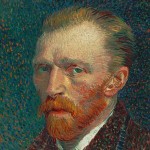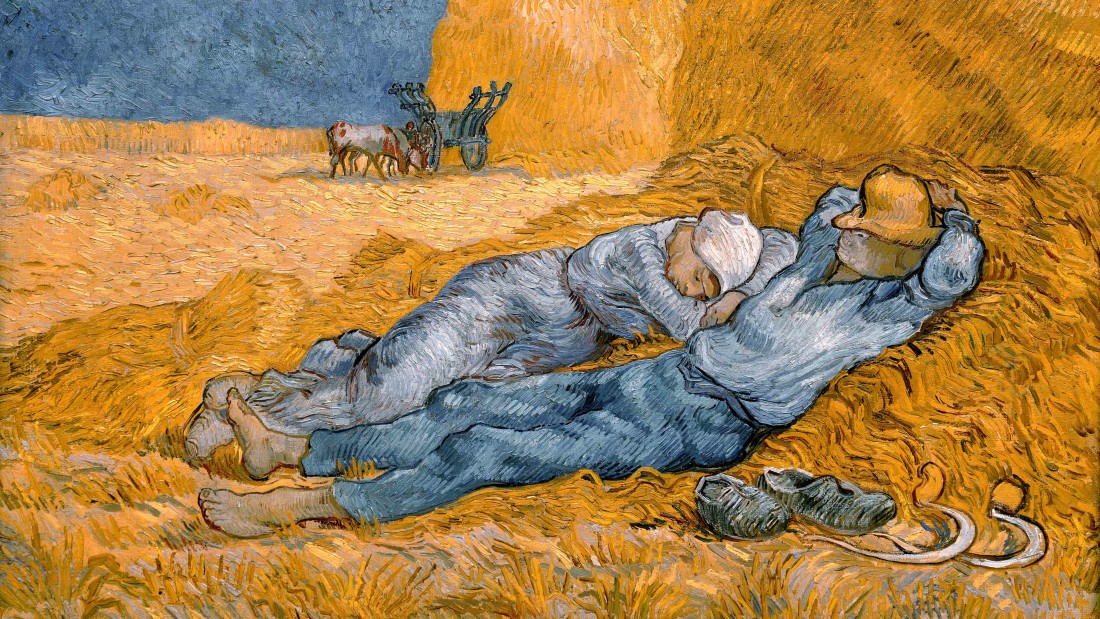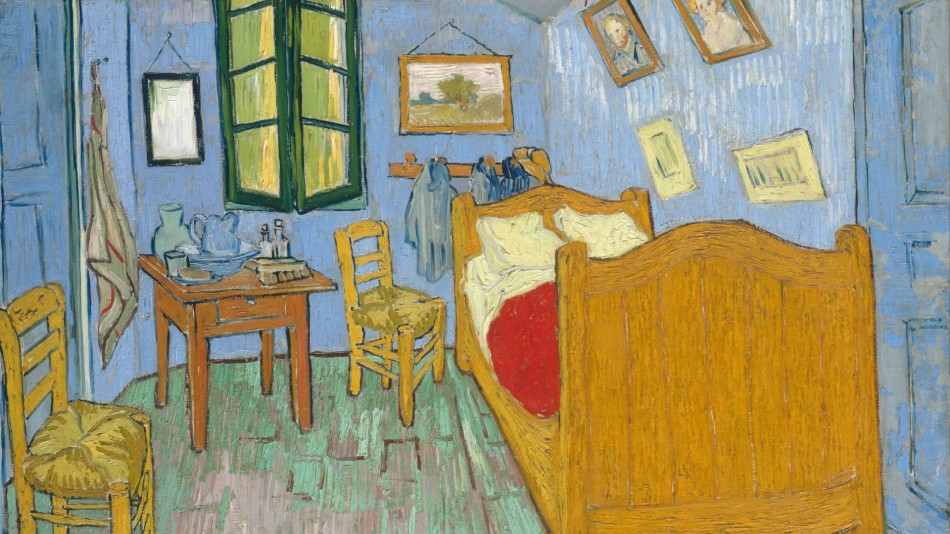Van Gogh presented himself in this self-portrait as a painter, holding a palette and paintbrushes behind his easel. He showed that he was a modern artist by using a new painting style, with bright, almost unblended colours. The palette contains the complementary colour pairs red/green, yellow/purple and blue/orange – precisely the colours Van Gogh used for this painting. He laid these pairs down side by side to intensify one another: the blue of his smock, for instance, and the orange-red of his beard.
Self-Portrait as a Painter was the last work Van Gogh produced in Paris; the city had exhausted him both mentally and physically. He told his sister Wil how he had portrayed himself: ‘wrinkles in forehead and around the mouth, stiffly wooden, a very red beard, quite unkempt and sad’.






